AttentionJD Vance: I am also an Intentionally Childless Cat(erpillar) Lady.
One more way I am of no social value, and yet somehow still not a sociopath.
Until a friend started telling me about ‘Saving the Monarch butterflies.’ about three years ago, I had never given more than the occasional passing thought to butterflies. I mean, I liked them. Who doesn’t like butterflies? But as living creatures go, insects had never been my soft spot. On the other hand, as soon as I heard the word “saving.” I was in. As it turned out, I still had a couple of saving-slots open since I gave up on trying to rescue narcissistic humans.
That made me a prime candidate for helping save the Monarchs. ( And before I go any further, let me clarify that by Monarchs, I mean exclusively the Lepidoptera kind. I am aware that the British Royal Family may also be going extinct. But I am pretty sure I can not provide the kind of accommodations required for them to thrive. See also: above edict about no longer helping save narcissistic humans.)
Anyway…I have told the story elsewhere on these very pages of how I got started with the whole butterfly thing. In fact, I have told it more than once. But for those of you too lazy to click those links, the shortest version of the story is: Because of the afore mentioned friend and his speech about saving the Monarchs, I had a few milkweed plants in my patio. Milkweed is the one and only plant with which the Monarchs are willing to do business. They lay their eggs on milkweed and when the caterpillars hatch, milkweed is the one and only plant they are willing to eat. This makes them even more of a dinner time challenge than my nephews used to be between the ages of 3 and 15 when they would only eat candy and chicken fingers. Also, once the caterpillars discover eating, they think of little else. They do it all day long.
They are also stunning, all dressed up in yellow/black/white striped Harry-Stylesesque-Onesies. And they are talented. They are impressively acrobatic..

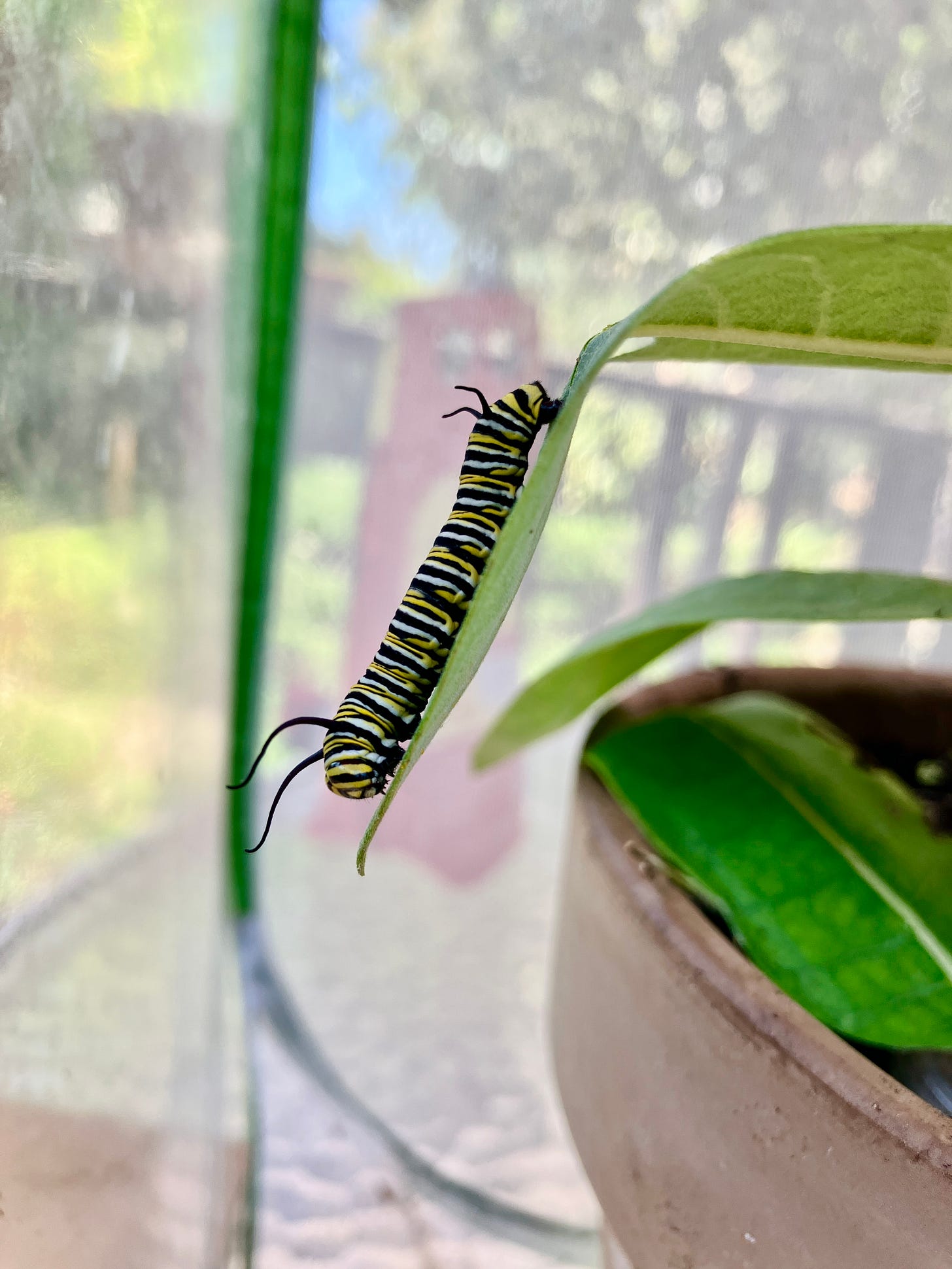
They also taught me that it is, in fact, possible to anthropomorphize and grow fond of insects!
But as it turns out, one of the reasons they need saving is that only 5% of them survive in “the wild.” (And in this case, by ‘the wild’ I am talking about my patio, which as you may have guessed, is another thing that needs saving.) Nature made the caterpillars indigestible to most birds because milkweed is toxic to a lot of animals. But the cats (as we in the Butterfly community call them) are easy prey for spiders, lizards and wasps. And while I am NOT intentionally saving any of those, it turns out I have a lot of all three living happily on my patio.
Long story short…(well, I guess it’s kind of too late for that now. We are already on the fourth paragraph of this supposedly short explanation) whenever I see any of these so-called ‘cats’ on my milkweed plants, I move the whole milkweed plant into the little collapsible butterfly habitat that I bought on Amazon
.And thus are they encouraged to grow to maturity, free from the inconvenience of predators. (And if that isn’t enough evidence to prove my lack of sociopathy, despite being intentionally childless and therefore of no societal value to JD Vance) so far 100% of my adopted cats have matriculated to butterfly. Even if you are terrible at math, it should be clear that I am providing them a much better set of odds for their future than the frequently sociopathic-seeming Mother Nature.
And before I go any further, I would like to add that I believe it is JD Vance who has been proven conclusively to be of no apparent societal value.
ANYWAY, during this, my third year of Butterfly fostering, I had to surmount an unexpected difficulty that briefly made me a nervous wreck. First, you need to know that after the caterpillars have totally decimated the milkweed plants, (which takes about 2 weeks of constant eating) there comes a moment where all of them suddenly lose interest in eating and begin following orders from some unseen biological voice only they can hear. It is as spooky and zombie-like to watch as anything I have ever witnessed, with the exception of that documentary on cult-leader Jim Jones and his so-called ‘Peoples Temple’.
Year after year, one after another, the so-called cats all crawl to the top of the cage and put themselves into a J formation like this.
Then a couple of days later, when you think you are going to finally see some kind of action but you are tired of just sitting there so you get up and leave the room to take a shower or make a sandwich, by the time you get back it is too late. They have all disappeared. There are no more cats. They have gone and turned into a chrysalis, a small hanging thing which resembles a tiny little green pepper. The cats are gone, never to return. They had their two week culinary adventure. Vacation is over.
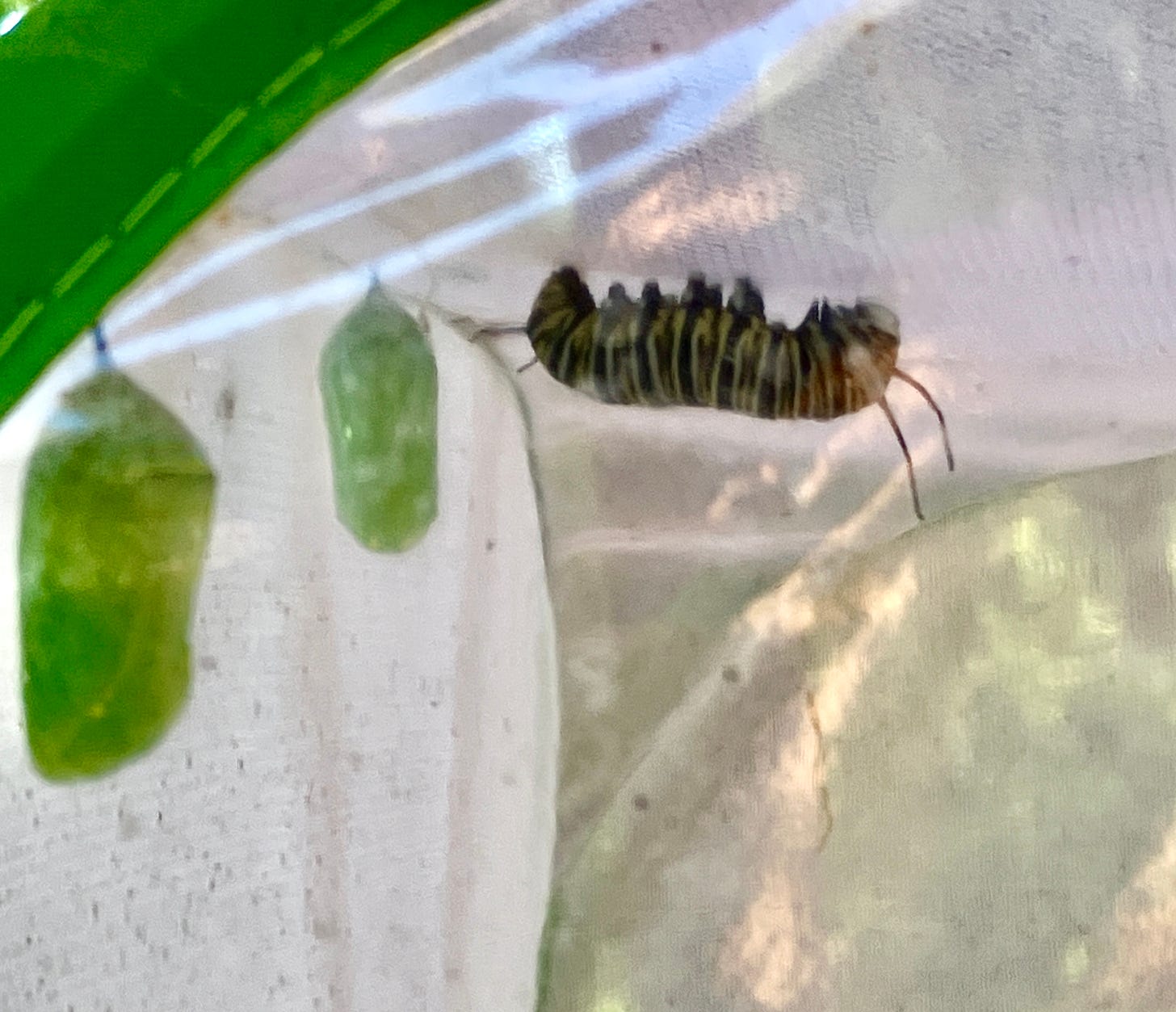
“Why is the chrysalis green?” you are wondering, in my pretend conversation with you. Well, because he or she wriggles out of their bespoke yellow and black Harry-Styles-striped-onesie and the green is what they look like underneath. “What?” the imaginary version of you is now saying, “And what becomes of this beautiful striped piece of fashionable outwear? For sale at a reduced price at The Real Real?” No. The cats simply hurl this important piece of their identity to the ground below, like any unappreciative teen assuming the adult in charge is going to pick it up. Here is what an empty cat suit looks like, after they take it off.
Unfortunately, this year one of the cats had an unexpected transitioning problem I had not encountered before. Because this year’s cats were an especially rambunctious group, one of them, in search of the perfect spot to settle down and grow a CREMASTER, knocked his brother or sister’s chrysalis down from where it was hanging. I came out to see this lying at the bottom of the cage.
Of course I was horrified. With no idea what to do next, I went immediately to Mr. Google to see if there were obvious solutions. And there were many! The Butterfly community loves the internet.
Mr. Google immediately introduced me to Dave the Butterfly Guy who showed me an easy way to hang the chrysalis back up using dental floss and a safety pin. It was a little nerve wracking but the result looked like this.

Anyway, it all turned out fine. Zontar was born healthy a few weeks later. He was released from the cage, free to go about his business, whatever that may be.
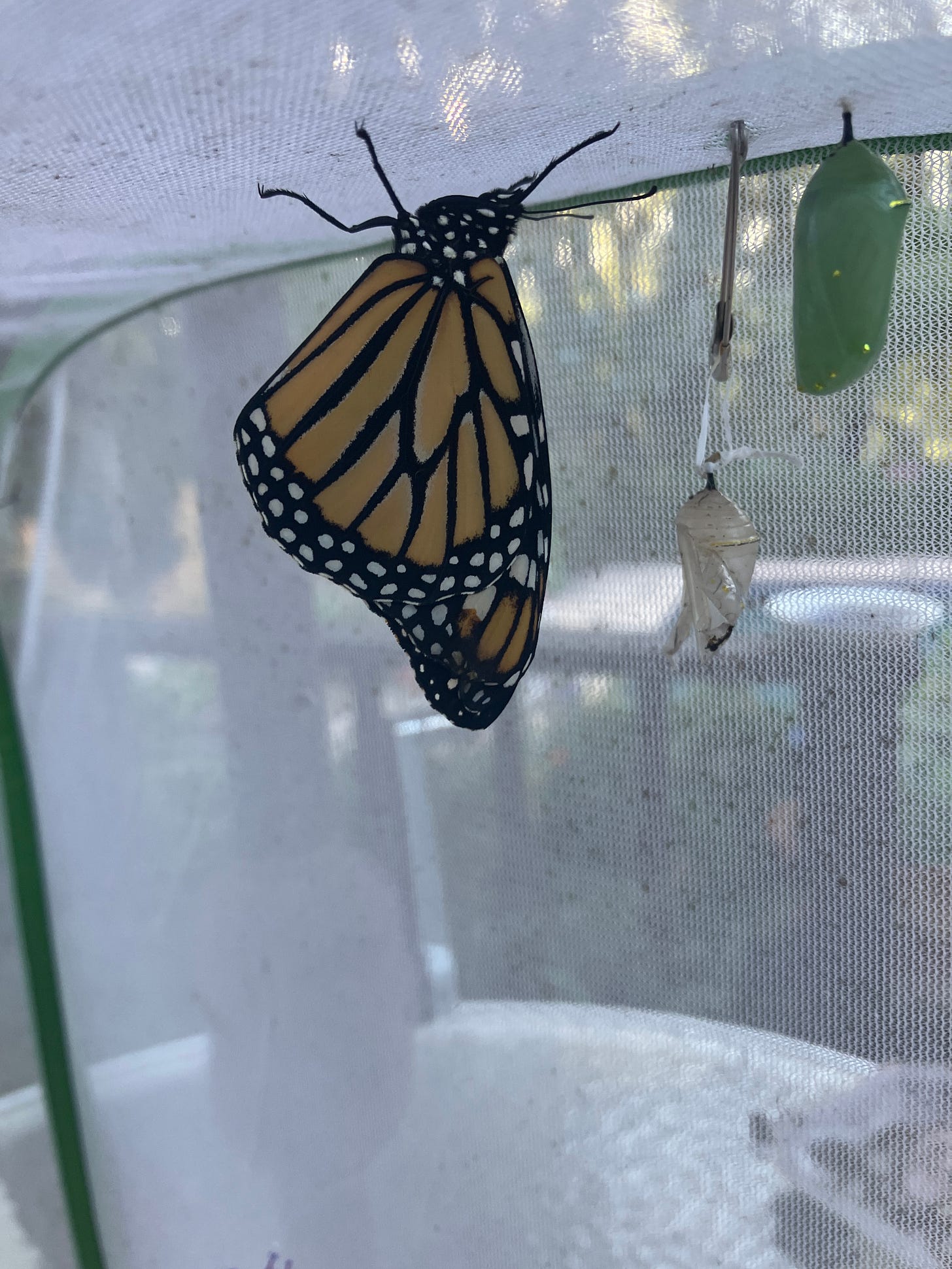
But the good news is that once again I beat nature’s odd by 95% . All of my cats matriculated to butterflies. And if I haven’t already put you to sleep with all lepidoptera talk, perhaps you would like to see 2 minutes and 12 seconds of this year’s graduating class being released to do God knows what. I don’t know how many of them are headed to the big Monarch convention in the mountains of Mexico. I encouraged them to attend. But like I said, I don’t pry.
There you have it. That is the Summer 2024 Markoe Butterfly report.
Now back to our regularly scheduled programming.




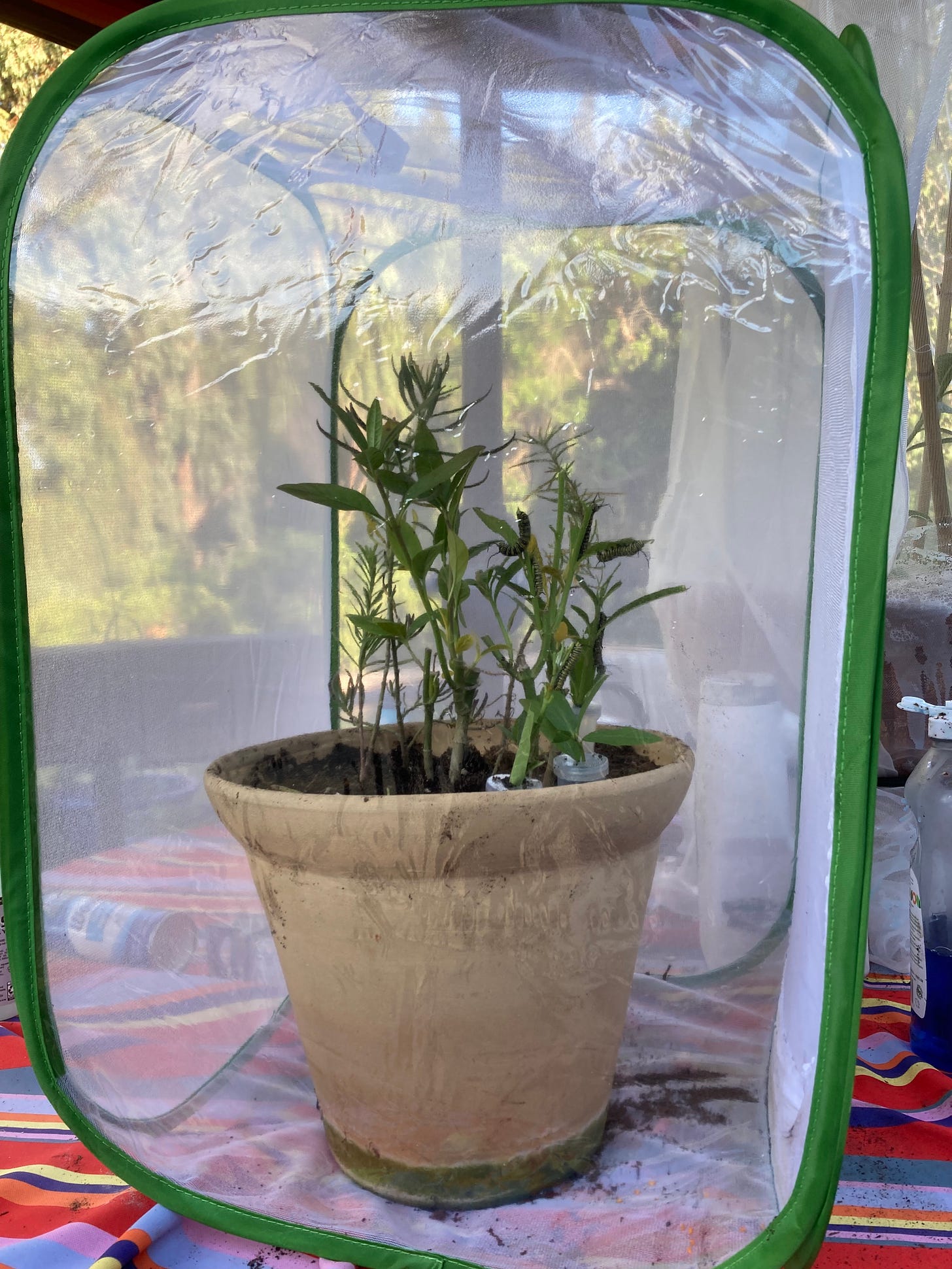
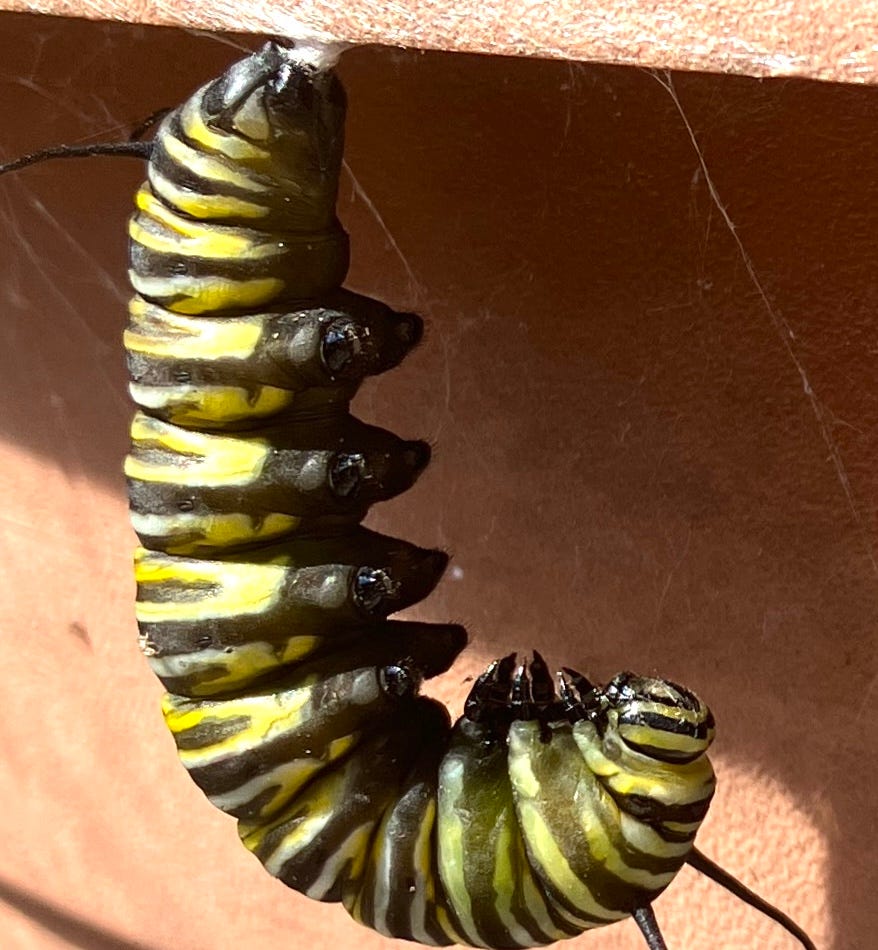
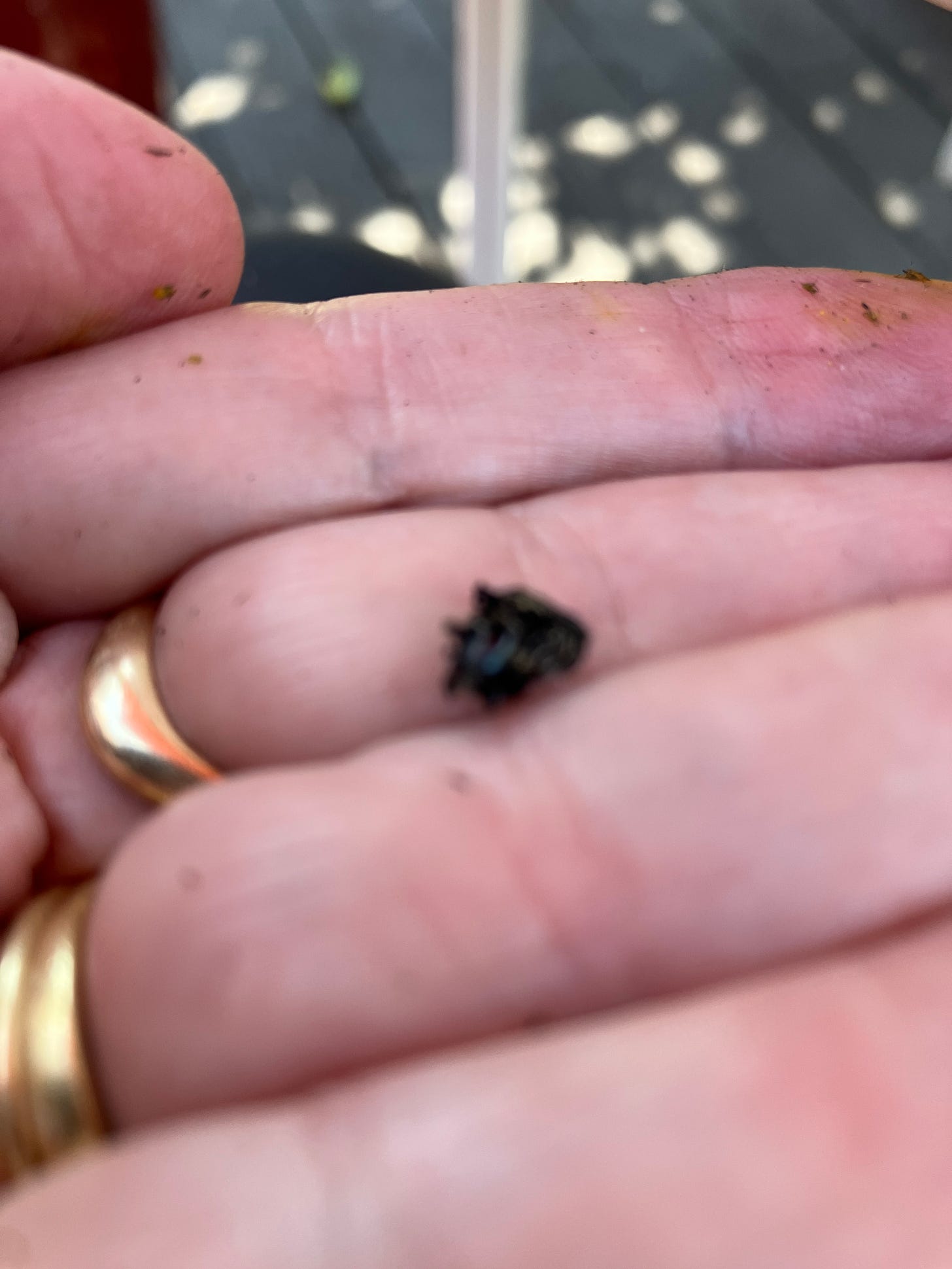

Guess what else a cremaster is? A scrotal muscle. Here’s Wikipedia on the subject:
“The cremaster muscle is a paired structure made of thin layers of striated and smooth muscle that covers the testicles and the spermatic cords in human males. It consists of the lateral and medial parts. Cremaster is an involuntary muscle, responsible for the cremasteric reflex; a protective and physiologic superficial reflex of the testicles. The reflex raises and lowers the testicles in order to keep them protected. Along with the dartos muscle of the scrotum, it regulates testicular temperature, thus aiding the process of spermatogenesis.”
It’s like an elevator operator. “Going up!” “Going down!”
Milkweed is just that. A weed! Plant it outside, and the first thing that happens: it gets four feet tall. Then, the golden aphids appear, covering the leaves. Then, a few ladybugs happen upon the restaurant. Mayhem ensues. The seed pods, when dry, explode and spread with the wind. Meanwhile, below ground, the traveling roots of the milkweed (especially common milkweed) send up shoots in other parts of your garden. And then you wait for something to happen. Having said that, stick with local varieties of milkweed. Here in CA, showy milkweed (for NorCal) or narrowleaf milkweed (throughout CA) are widely available and attract monarchs. And this warning from (Calscape) a great resource for native CA plants): "To maximize Monarch butterflies reaching their overwintering areas, plant only locally native milkweed species". If you are growing tropical milkweed, you are not helping the monarchs. Details here: https://ucanr.edu/blogs/blogcore/postdetail.cfm?postnum=56986